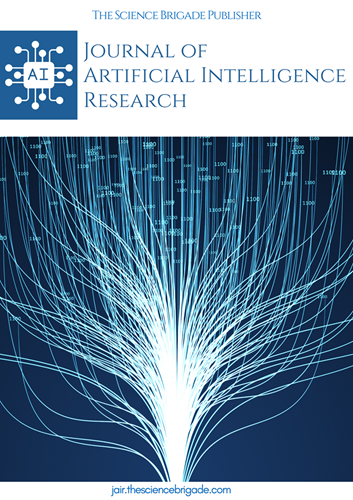Evolutionary Design Optimization: Unveiling the Potential of Generative Algorithms for Complex Engineering Challenges
Keywords:
Evolutionary Design Optimization, Generative Algorithms, Engineering Challenges, Solution Spaces Exploration, Adaptive Design, Novel Designs, Machine Learning Integration, Computational Efficiency, Design Objectives Optimization, Future DirectionsAbstract
Evolutionary Design Optimization (EDO) has emerged as a promising paradigm for addressing complex engineering challenges by harnessing the power of generative algorithms. This paper explores the potential of generative algorithms in facilitating EDO processes, focusing on their ability to efficiently explore solution spaces, adapt to changing constraints, and generate novel designs. Through a comprehensive review of existing literature and case studies, we delve into the mechanisms behind evolutionary algorithms and their application in various engineering domains. Key findings highlight the versatility of generative algorithms in optimizing diverse design objectives, from structural robustness to energy efficiency. Moreover, we discuss the integration of machine learning techniques to enhance the performance of EDO methods and overcome computational limitations. This paper aims to provide insights into the evolving landscape of EDO, paving the way for future research directions and practical applications in engineering design.
References
Holland, John H. "Adaptation in Natural and Artificial Systems." University of Michigan Press, 1975.
Goldberg, David E. "Genetic Algorithms in Search, Optimization, and Machine Learning." Addison-Wesley Professional, 1989.
Michalewicz, Zbigniew. "Genetic Algorithms + Data Structures = Evolution Programs." Springer, 1992.
Deb, Kalyanmoy. "Multi-Objective Optimization Using Evolutionary Algorithms." Wiley, 2001.
Koza, John R. "Genetic Programming: On the Programming of Computers by Means of Natural Selection." MIT Press, 1992.
Eiben, A.E., and J.E. Smith. "Introduction to Evolutionary Computing." Springer, 2007.
Cramer, Nicholas L. "A Representation for the Adaptive Generation of Simple Sequential Programs." Proceedings of the First International Conference on Genetic Algorithms, 1985, pp. 183-187.
Back, Thomas. "Evolutionary Algorithms in Theory and Practice: Evolution Strategies, Evolutionary Programming, Genetic Algorithms." Oxford University Press, 1996.
Mitchell, Melanie. "An Introduction to Genetic Algorithms." MIT Press, 1998.
Goldberg, David E., and John H. Holland. "Genetic Algorithms and Machine Learning." Machine Learning, vol. 3, no. 2, 1988, pp. 95–99.
Deb, Kalyanmoy et al. "A Fast and Elitist Multi-Objective Genetic Algorithm: NSGA-II." IEEE Transactions on Evolutionary Computation, vol. 6, no. 2, 2002, pp. 182–197.
Coello, Carlos A. Coello, Gary B. Lamont, and David A. Van Veldhuizen. "Evolutionary Algorithms for Solving Multi-Objective Problems." Springer, 2007.
Horn, Jeffrey, Nicholas Nafpliotis, and David E. Goldberg. "A Niched Pareto Genetic Algorithm for Multi-Objective Optimization." Proceedings of the First IEEE Conference on Evolutionary Computation, 1994, pp. 82-87.
Deb, Kalyanmoy, et al. "Scalable Test Problems for Evolutionary Multi-Objective Optimization." Evolutionary Computation, vol. 10, no. 2, 2002, pp. 125–147.
Yao, Xin. "Evolving Artificial Neural Networks." Proceedings of the IEEE, vol. 87, no. 9, 1999, pp. 1423–1447.
Simon, Herbert A. "The Sciences of the Artificial." MIT Press, 1969.
Bishop, Christopher M. "Pattern Recognition and Machine Learning." Springer, 2006.
LeCun, Yann, Yoshua Bengio, and Geoffrey Hinton. "Deep Learning." Nature, vol. 521, no. 7553, 2015, pp. 436–444.
Goodfellow, Ian, et al. "Deep Learning." MIT Press, 2016.
Bengio, Yoshua. "Deep Learning of Representations: Looking Forward." Proceedings of the IEEE, vol. 98, no. 8, 2010, pp. 1358–1363.
Downloads
Published
How to Cite
Issue
Section
License

This work is licensed under a Creative Commons Attribution-NonCommercial-ShareAlike 4.0 International License.
License Terms
Ownership and Licensing:
Authors of this research paper submitted to the journal owned and operated by The Science Brigade Group retain the copyright of their work while granting the journal certain rights. Authors maintain ownership of the copyright and have granted the journal a right of first publication. Simultaneously, authors agreed to license their research papers under the Creative Commons Attribution-NonCommercial-ShareAlike 4.0 International (CC BY-NC-SA 4.0) License.
License Permissions:
Under the CC BY-NC-SA 4.0 License, others are permitted to share and adapt the work, as long as proper attribution is given to the authors and acknowledgement is made of the initial publication in the Journal. This license allows for the broad dissemination and utilization of research papers.
Additional Distribution Arrangements:
Authors are free to enter into separate contractual arrangements for the non-exclusive distribution of the journal's published version of the work. This may include posting the work to institutional repositories, publishing it in journals or books, or other forms of dissemination. In such cases, authors are requested to acknowledge the initial publication of the work in this Journal.
Online Posting:
Authors are encouraged to share their work online, including in institutional repositories, disciplinary repositories, or on their personal websites. This permission applies both prior to and during the submission process to the Journal. Online sharing enhances the visibility and accessibility of the research papers.
Responsibility and Liability:
Authors are responsible for ensuring that their research papers do not infringe upon the copyright, privacy, or other rights of any third party. The Science Brigade Publishers disclaim any liability or responsibility for any copyright infringement or violation of third-party rights in the research papers.




